Published
on 21
Oct 2022
|
All rights reserved.
|
|
|
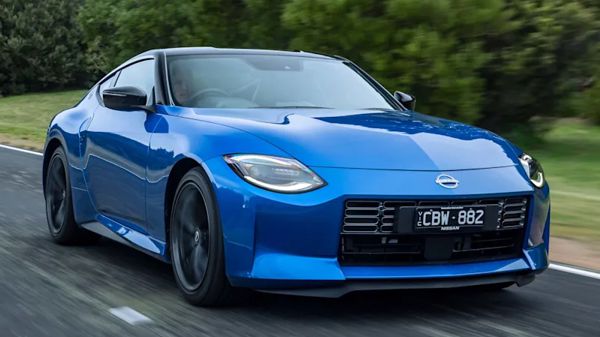
|
|
Nissan
is wise not to call it 300ZX, for the better or worse.
|
|
It takes Nissan 14 long
years to come up with the replacement of 370Z. Why? Because bean
counters found the numbers didn’t work. Sports car market in general
has been declining for a couple of decades. Some players withdrew (e.g.
Mercedes SLK, Honda S2000 and Lotus Elise), some collaborate to survive
(e.g. BMW Z4 and Toyota Supra), some go upmarket to keep profit (e.g.
Porsche Boxster/Cayman) and some are just waiting to die (Audi TT,
Chevy Camaro, if you count them as sports cars). Even a brand as strong
as Ford Mustang has to go global to complement the sales lost in its
home market. Nissan’s Z label isn’t as strong as Mustang. It certainly
carries a lot of history and romance, in particular the 300ZX (Z32) that ran between
1989 and 2000, but that was a long time ago.
Recent generations of Z-cars have been underwhelming. When Le Cost
Killer revived the label exactly 20 years ago with 350Z, it
was deemed to be a bold move. However, it was the project’s low
development and production costs that got his approval. Instead of a
bespoke sports car platform, the 350Z was derived from the FM platform
of Skyline sedan and shared its
VQ-series engine as well. Turbocharging was ditched, as were 4-wheel
steering, adjustable dampers and 2+2 body option. The 350Z was a much
simplified product, using creative styling to hide its low-rent cockpit
and lack of sophistication. This allowed the car to be priced more
affordable yet turning a profit. It was proved to be a success, so 370Z
followed in 2008 as a mild evolution.
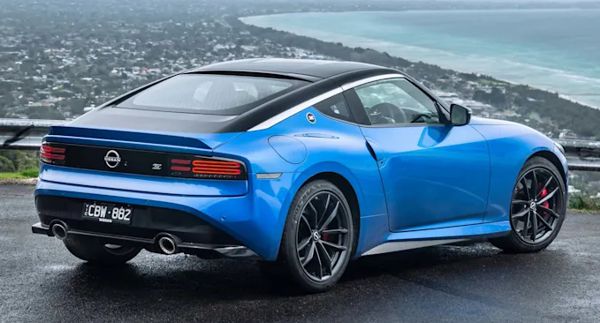
|
|
It
took Nissan 20 years to re-discover the strength of 300ZX, which is
still the best looking Z car of all.
|
|
The engineering chief of the new Z-car admits that budget is the main
constraint. It would not have been possible to get management’s
greenlight if they ask for a new platform and motor, so the new car is
settled with yet another evolution of the 20-year-old FM platform and a
3.0-liter twin-turbo V6 that comes straight from Infiniti Q50 / Q60 Red
Sport 400. At least, the latter offers 400 horsepower and its
specifications is a reminiscent of the last 300ZX. Whether the old
chassis can cope is another matter.
The use of old chassis means hard points and key dimensions remain
unchanged. There is nothing wrong with its rather compact length and
generous wheelbase of 2550 mm, but unfortunately, the high cowl and
He-Man proportion of the last 2 generations are carried over, which is
not so sexy. And ridiculously, the Z-car is better known as Fairlady in
Japan!
Still, Nissan’s designers have done a rather good job to renovate its
exterior. While I don’t like its headlamps and square grille, the
subtle power budge is a reminiscent of the original 240Z, and best of
all, the tail is a tribute to the last 300ZX. It reminds us that car is
still the best-looking Z-car of all. Even when you look back today, you
can’t help amazed how sexy, sophisticated and refined its design was.
Its flush glass and millimeter assembly gaps were well beyond its age.
Not sure why it took Nissan 20 years to re-discover its own strength.
The new Z is not a groundbreaking design, but it is still nice to see
it claws back some of the beauty it lost in the last couple of decades.
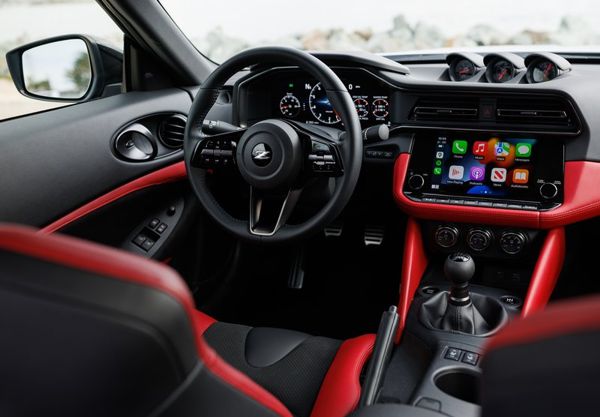
|
|
Old-school
interior carries over a lot of cheap parts.
|
|
Inside, the new Z needs to compromise with the old car’s flawed
ergonomics and many cheap switchgears. While the dashboard is new, its
architecture is clearly based on the old car, which is old-fashioned.
You sit low relative to the cowl, so forward vision isn’t great. Rear
quarter visibility is limited by tiny windows, while side view is not
much better, hampered by high waistline and a sloping roofline. Seat
adjustment switches are strangely located at the transmission tunnel.
The new digital instrument display is no fancy but at least clear and
easy to read. The center touchscreen is competent, but the trio of
turbo boost, turbo speed and battery gauge added to the top of
dashboard is gimmicky – do you really need to monitor turbo boost level
these days? While build quality is improved from the old car, there are
still plenty of cheap hard plastics and switches that are either
carried over or sourced from other Nissan products.
The biggest improvement has to be power. The 3.0-liter twin-turbo V6
produces a neat 400 horsepower at 6400 rpm and 350 pound-foot of torque
from 1600-5200 rpm, compared with 332 hp at 7000 rpm and 270 lbft at
5200 rpm of the old 3.7-liter mill. Its shorter stroke and modern
construction has the old engine’s notorious vibration banished.
However, compared with the BMW straight-six employed by arch-rival
Toyota Supra, Nissan’s VR30DDTT seems to be unremarkable. Although it
is more powerful on paper, in the real world the contrary is true – the
Supra is a lot quicker. Car and Driver found the Z takes 4.5 seconds to
go from standstill to 60 mph, and a rather disappointing 10.6 seconds
to 100 mph, whereas a Supra with manual gearbox takes 3.9 and 9.6
seconds, respectively (automatic car is even quicker). The Nissan V6 is
neither as eager to rev to its 7000 rpm redline nor as responsive,
lag-free and torquey at lower revs. The exhaust note it produces is
also less melodic to ears, which is no surprise considering the
difference between straight-six and V6.
The Z-car’s 6-speed manual gearbox is an improvement from the old unit,
being less notchy to shift, but it is still far from world-class,
despite auto rev-matching and no-lift shift function. The alternate
9-speed automatic is just a lift from Nissan’s sedans and trucks, not
worth a place in a pure sports car.
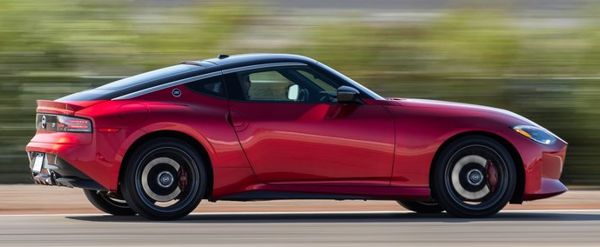
|
|
Not
exactly fast. Not exactly exciting.
|
|
The aging chassis is given some reinforcement around the engine
compartment and hatchback, boosting torsional rigidity by a rather
modest 11 percent. The suspensions of double-wishbone and multi-link
are carried over, although a new upper wishbone increases front caster
angle to boost directional stability. New monotube dampers have less
friction, allowing springs, dampers and anti-roll bars to be stiffened
a little bit. Overall, the Z gained 70 kg from the early 370Z. Weight
distribution continues to deteriorate, from 53:47 of 350Z to 55:45 of
370Z and today’s 56:44. And that’s for manual gearbox. Automatic will
shift one more percent to the wrong side. A Ford Mustang V8 has better
static balance.
In the US, $41,000 will buy you the basic Z, but you will definitely
upgrade to Performance spec. which gains a clutch-type LSD, stiffer
suspension, larger brakes and 19-inch wheels for $51,000. However, the
aging architecture still forgoes modern must-have options like adaptive
dampers, e-LSD and a clever traction/stability control. If the Z drives
like an MX-5 or GR86, that might not be much a problem. Unfortunately,
it does not. Push the Z on a great road and you will find it steers and
controls its body less satisfying than a Supra, a Mustang Mach 1 or
even a BMW M240i xDrive. Part of this is down to its Bridgestone
Potenza S007 B tires that produce significantly less grip than the
Michelin PS 4S tires of its rivals. This hampers its roadholding and
turns its nose to wash wide earlier than keen drivers would expect.
Braking performance is also compromised by the weak rubbers. Other
problems are attributed to the aging chassis and suspension, which
fails to tie the car down at speed or in hard cornering. There is more
roll and pitch than a Mustang driver would accept. Despite the car’s
generous wheelbase, its soft suspension fails to damp over high-speed
bumps, so the car bounces a lot. The interior bits vibrate over rougher
roads. The Z just lacks the chassis rigidity and damping sophistication
required for a modern sports car. Its steering is also criticized for
lacking feel.
Driving with less effort, the Z becomes more agreeable. The soft
suspension works better at slower pace and smoother road. The engine’s
unresponsive low-end and rubbery gearshift are also less noticeable
when you don’t rush them. Still, you have to question if the $51K price
is well spent, considering the aforementioned rivals are all in the
same ballpark.
When the Z was unveiled a year ago, I questioned why it was called Z
instead of 300ZX. Now I am glad it didn't, because that would protect
one of the most legendary labels from downgrading.
|
Verdict:    |
Published
on 2
Nov 2023
|
All rights reserved.
|
|
Z Nismo
|
|
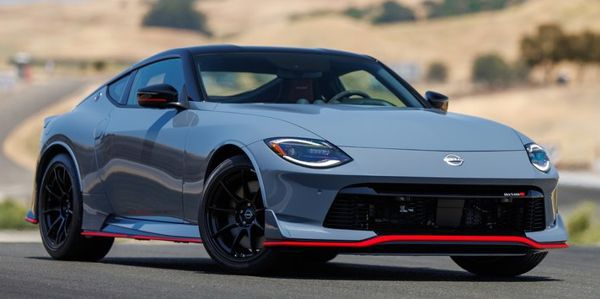
|
|
A
hardcore driver's car without manual transmission is an odd combination.
|
|
The
new Z launched last year is a little disappointing, neither fast nor
sporty enough to impress car enthusiasts. Maybe the addition of Nismo
version could help. Nismo, or Nissan Motorsports, is the official
tuning arm of Nissan. While it is not quite as famous as BMW’s M or
Mercedes’ AMG, it did produce some exciting performance cars in the
past couple of decades, such as the Silvia S14-based 270R and the
current GT-R Nismo. The last generation 370Z got a Nismo version, too,
but its performance upgrade was relatively modest. What about the new
one?
Based on the new Z, its twin-turbo V6 has rewritten codes to increase
boost pressure. In addition to upgraded oil and inter-cooling, output
is lifted by 20 hp to 420 hp, while peak torque gains 34 pound-foot to
384 lbft. Meanwhile, Nismo ditches the manual gearbox of the standard
car and opts for a beefed up version of 9-speed automatic, saying it is
faster than the manual would be. Yes, a strengthened clutch allows it
to quicken upshifts by 27 percent and downshifts by 50 percent in the
quickest Sport+ mode, but ditching manual gearbox on a driver’s car
seems anticlimax, especially one supposed to be a hardcore driver’s
car, isn’t it?
On the chassis side, the Nismo version has its suspension stiffened, no
matter springs, dampers, roll bars or bushings. Extra bracings improves
its torsional rigidity slightly. The front brakes are enlarged from 355
to 380 mm, while wider and lighter forged alloy wheels are wrapped with
stickier Dunlop SP Sport Maxx GT600 rubbers, especially as the rear
tires get 10 mm wider. More grip and traction is guaranteed. Outside,
there are deeper chin spoiler and skirts to improve both downforce and
drag. Inside, new Recaro buckets hug the driver and passenger tighter,
although they sacrifice electric adjustment.
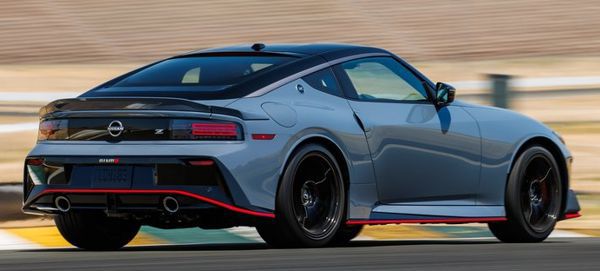 |
|
It
is what the standard Z car should have been from the outset...
|
|
On the road, the Z Nismo is not noticeably quicker than the standard
car, as its 5 percent extra power is nearly offset by 4.7 percent of
weight gain. However, it does feel noticeably sportier to drive. The
steering feels sharper, the body control tighter, the braking is more
responsive and more powerful, and the added grip allows it corner
faster and harder. In short, it is what the standard Z car should have
been from the outset.
As for everyday driving, the retuned suspension does feel firm. It is
not exactly punishing, but the lack of adaptive dampers means it
suffers quite a lot on poorer surfaces. Moreover, the beefy tires
generate constant noises on the move, hampering cruising refinement.
Is it as good as rivals to drive? Probably not. Toyota Supra and BMW M2
are quicker, sweeter to steer and more versatile. Opt for manual
gearbox, they are more engaging to drive than the Nismo. Ford Mustang
Darkhorse looks cooler and offers V8 power and sound. The mid-engined
Porsche 718 and Alpine A110 have the same seat count as the Nissan but
offer a driving experience far superior.
Moreover, the Nismo version is by no means a bargain. At $66,000, it is
actually more expensive than the starting prices of its rivals, or $13K
dearer than the fully loaded Z Performance. At such a hefty price,
there are quite a lot of options for driving enthusiasts.
|
Verdict:   
|
|